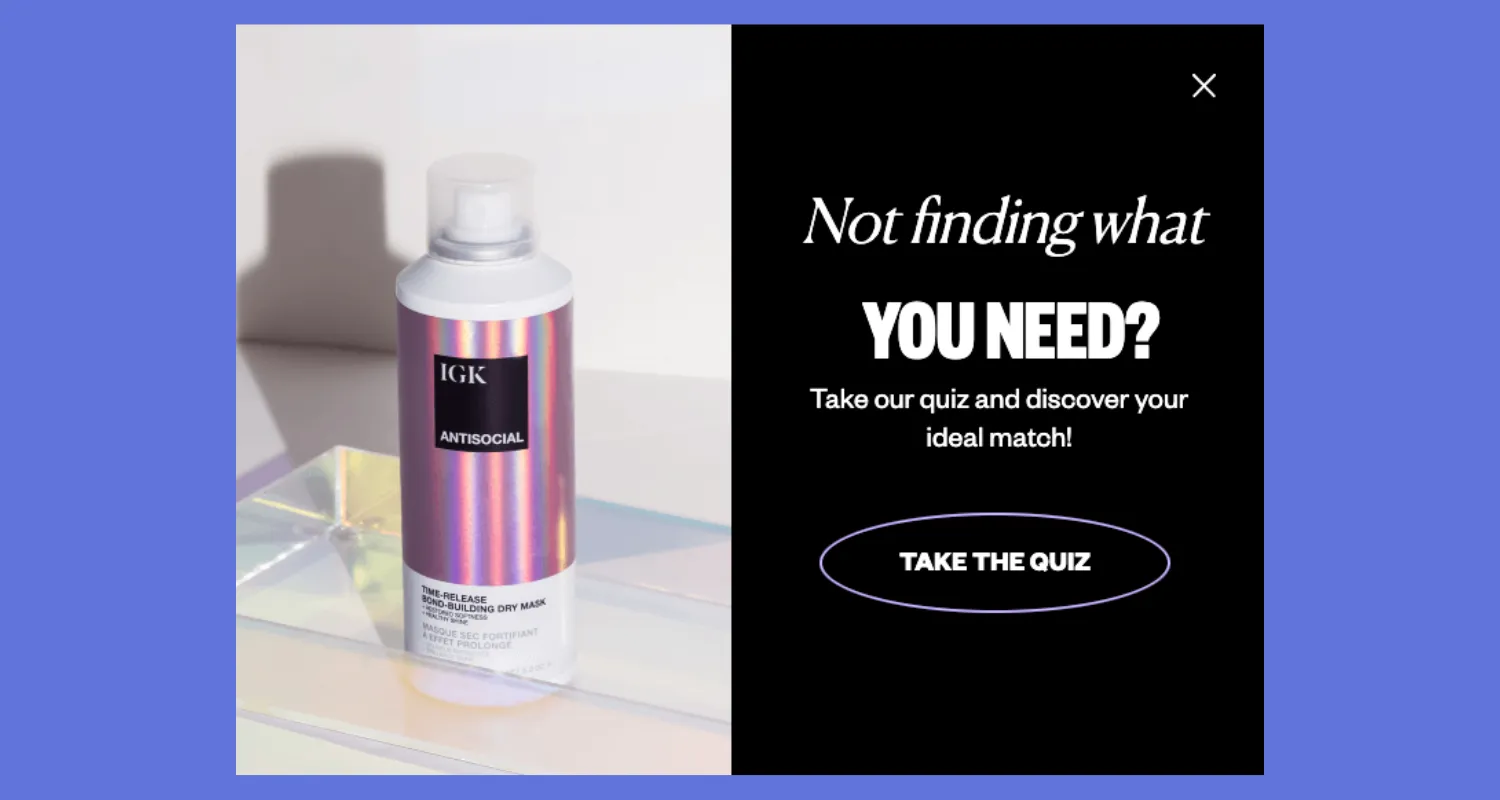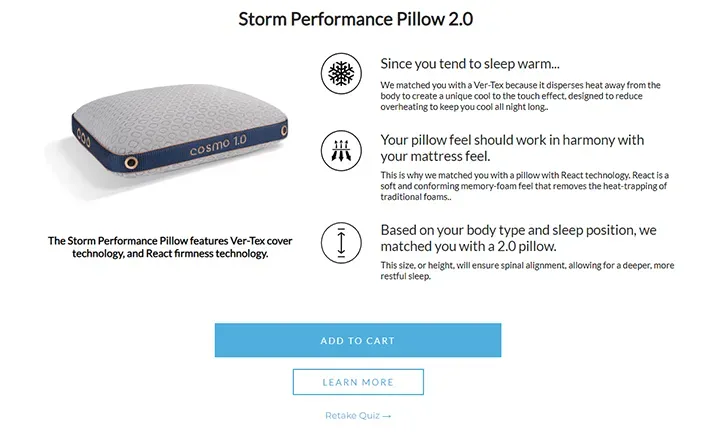March 13, 2025
Learn how to use your consumer-consented data to drive more sales with personalized offers and one-time-use coupon codes.

Discounts drive sales, but too much discounting cuts into profit. What if you could offer strategic, personalized discounts that increase conversions—without hurting margins? That’s the power of dynamic coupons.
Dynamic coupons are a powerful tool for Ecommerce businesses to connect with customers. They’re customized to individual shopping behavior and preferences, so they're much more effective than generic one-size-fits-all discounts. Think of a coffee mug discount for a customer who searches for coffee products or a personalized offer on canvas prints for someone who loves home decor. The possibilities are endless.
In this guide, I’ll explain dynamic coupons, their use cases, and how to implement them. Whether you want to improve customer experience, boost conversions, or recover abandoned carts, dynamic coupons can be a profitable growth channel.
Dynamic coupons allow Ecommerce businesses to maintain consistent pricing and deliver customer-specific discounts that build trust and loyalty. Businesses can increase engagement and sales by customizing promotions for individual customers based on their behavior and preferences.
Dynamic coupons offer:
Let’s get into it.
Personalized discounts improve customer engagement by matching offers with individual shopping behavior. Predictive analytics allows brands to predict customer behavior and create offers that complement shopping habits. For example, if customers buy personalized wedding gifts frequently, a timely discount on similar products from personalization malls can enhance their shopping experience.
This works well for companies like Andie Swim who transformed their swimwear shopping experience with a guided selling quiz that drove a 296% increase in conversions. Much like Andie’s approach to personalization, dynamic coupons can really enhance the customer experience by matching offers with individual shopping behavior.
Delivering dynamic coupons across multiple channels improves customer engagement by reaching them on their preferred communication platforms. Personalized coupon strategies via email, SMS, or website pop-ups can increase customer loyalty and repeat business.
Real-time discounting can encourage immediate purchases and increase conversions. Responding to customer actions in real-time increases conversion chances. For example, displaying a discount can reduce cart abandonment and encourage final purchase if a customer shows interest in a product.
Many brands are seeing great results with this personalized approach. IGK Hair, for example, saw a 30% increase in color sales after implementing a guided selling quiz that helped customers find their perfect hair color match. This personalization is how dynamic coupons can convert through timely and relevant offers.

Using zero-party data allows businesses to create personalized discount codes that resonate with customers’ interests. Adding expiration dates to dynamic coupons can prompt faster customer decisions and conversion. For example, a time-limited discount code can create a sense of urgency and lead to faster purchase decisions.
Cart abandonment is a big problem in Ecommerce; 72% of carts are left unpurchased. Time-limited discounts and other targeted incentives can persuade customers to complete purchases and reduce cart abandonment. By offering personalized incentives at the right time, brands can encourage customers to complete purchases.
It’s working well across different industries. Whisker, known for its Litter-Robot, saw a 388% increase in conversion rates after implementing a product quiz. They also saw their average order value double. This success shows how personalized approaches like dynamic coupons can transform the shopping experience and reduce cart abandonment.
Effective abandonment recovery strategies include personalized email campaigns that notify customers about items left in their carts. Surprise coupon codes can catch the attention of price-sensitive customers who would otherwise abandon their carts. Free shipping or an exclusive discount on abandoned items can also increase recovery rates.
Dynamic coupons increase conversions by offering targeted discounts to customers. They’re particularly effective in cart abandonment and help save profit margins by offering discounts to customers likely to convert.
Next, we’ll get into specific use cases for dynamic coupons:
Discounts for first-time buyers can encourage them to complete their first purchase and increase the chance of converting new visitors into customers. For example, a discount code for first-time buyers can enhance their shopping experience and encourage loyalty and extra savings.
After implementing a personalized product recommendation quiz, BedGear saw a 490% increase in conversions. Their strategy of engaging new visitors with tailored experiences is how dynamic coupons can drive first time purchases.

Setting expiration dates shortly after issuance can create urgency for new customers using dynamic coupons. Personalizing these discounts based on customer interests or shopping behavior can make the offer more relevant. A discount on a minimum purchase amount can encourage new customers to buy more.
Loyalty programs can use dynamic discounts to reward repeat customers and increase retention. A dynamic coupon strategy can enhance loyalty by rewarding frequent shoppers with tailored discounts after certain purchase milestones. For example offering exclusive discounts to loyal customers can strengthen the relationship between the business and repeat customers.
Analytics tools help retailers identify their most valuable customers and create targeted coupon campaigns to encourage repeat purchases. A/B testing the effectiveness of loyalty coupons helps determine their impact on customer engagement and lifetime value.
Over 70% of online shopping carts are abandoned so it’s crucial to have effective recovery strategies. Sending coupons to customers who abandon their cart can encourage them to complete purchase. Targeted discounts to users who abandon their cart can recover lost sales. Personalized emails and SMS with time sensitive discounts can increase recovery rates.
Sending the first recovery email within 30 minutes of cart abandonment can increase conversions by over 20%. Email and SMS together in multi-channel strategies can improve engagement and recovery.
Dynamic coupons tailored to individual customer behavior and preferences are key to engagement. Successful implementation relies on strategic customer engagement and data analysis.
The following sections cover specific best practices, including personalization through customer segmentation, timing and trigger-based discount strategies, multi-channel distribution, A/B testing and performance optimization, and avoiding overdiscounting and margin loss.
Segmenting customers by purchase habits allows businesses to better target promotions. Segmenting customers based on their interaction with dynamic coupon codes enhances targeted communication and increases coupon redemption rates. Metrics like CouponID and UniqueCode help marketers create precise audience segments for targeted promotions.
Some companies are seeing incredible results with this approach. Take Peak Wellness USA, which achieved a 37X ROI with its interactive guided selling quiz. By segmenting customers based on their preferences and matching them with the perfect products, Peak Wellness USA created a personalized experience similar to what dynamic coupons can offer through targeted segmentation.
Segments based on coupon assignment can increase engagement by targeting customers who received specific promotions. These segments can be updated to reflect new coupon assignments enabling ongoing personalization in marketing efforts. Automating discount strategies allows for timely customer engagement and increases conversion and retention.
Sending replenishment reminders with dynamic discounts encourages customers to re-purchase consumable products and helps businesses maintain consistent revenue.
Having multiple channels for coupon distribution increases reach and engagement with your customers. A multi-channel approach makes sure dynamic coupons reach customers through their preferred communication channels. Coupons sent via email, social media and SMS increases reach and impact.
Digital coupons stored in mobile wallets are at customers’ fingertips, making them more likely to be redeemed. A multi-channel distribution strategy gets digital coupons in front of more customers and brands.
See how Digioh can power your coupons—Book a demo to learn how Digioh can help you build dynamic coupons, product recommendation quizzes, experiential pop-ups & forms, onsite personalization, offsite retargeting, and more.
Measuring the right metrics is crucial for evaluating the effectiveness of your coupon strategies and making data-driven decisions about future campaigns.
The coupon redemption rate serves as the most fundamental metric in any discount campaign. A low redemption rate might indicate that your coupons aren't reaching the right audience, the offer isn't compelling enough, or the expiration date is too short. Analyzing this metric across different customer segments and distribution channels can provide valuable insights for optimization.
Conversion rate reveals how effectively your coupons transform browsers into buyers. This metric goes beyond redemption to show whether the discount motivates customers to complete their purchase journey. A high redemption rate with a low conversion rate might indicate that customers save coupons for later use or abandon carts despite initial interest in the offer.
AOV helps determine whether your coupon strategy increases customer spending or simply discounts existing purchase behavior. Effective coupons should encourage customers to add more items to their cart or upgrade to premium options. Monitoring this metric allows you to design coupon structures that maximize revenue per transaction rather than just focusing on volume.
Customer retention gives you insight into the long-term value of your coupon strategy. While coupons can effectively acquire new customers, the true test is whether those customers continue to purchase without discounts. Tracking post-redemption behavior helps identify which coupon structures create lasting customer relationships versus those that attract discount-dependent shoppers.
Repeat purchase rate focuses specifically on the purchasing frequency of coupon users. This metric helps determine whether your discounting strategy creates buying habits or simply shifts the timing of inevitable purchases. When analyzed alongside retention data, it provides a comprehensive view of post-promotion customer behavior and lifetime value potential.
ROI calculation provides the bottom-line impact of your coupon strategy. This holistic metric weighs all costs (discount amounts, distribution, marketing) against all benefits (increased sales, new customers, higher AOV). To accurately measure ROI, establish a clear attribution model that accounts for both your coupon campaigns' direct and indirect effects.
Dynamic coupons are a powerful tool for Ecommerce businesses, offering personalized discounts that increase customer engagement and conversions and reduce cart abandonment. By understanding the use cases, implementing best practices, and using Digioh, you can create effective coupon strategies that drive sales and customer loyalty.
What are dynamic coupons?
Dynamic coupons are personalized discounts that adjust based on customer behavior and preferences, providing real-time incentives to engage and convert.
How do dynamic coupons enhance personalization and customer experience?
Dynamic coupons significantly personalize the customer experience by tailoring offers to individual shopping behaviors and preferences, using predictive analytics to deliver timely and relevant customer discounts.
How do dynamic coupons reduce cart abandonment?
Dynamic coupons reduce cart abandonment by providing targeted, time-sensitive discounts to encourage customers to complete purchases. Using personalized incentives through email or surprise offers can boost conversion rates significantly.
What are some use cases for dynamic coupons?
Dynamic coupons are used for first-time purchase discounts, loyalty and retention offers, cart abandonment recovery, exclusive email and SMS offers, and targeted discounts based on customer intent. Implementing these will increase customer engagement and conversions.
What are the key metrics to measure?
To get a full picture, measure coupon redemption rate, conversion rate impact, AOV, Customer Retention, Repeat Purchase Rate, and ROI.
Zero consumption based pricing with zero limits allows your brand to deploy Digioh across your entire marketing funnel.
book a demo
